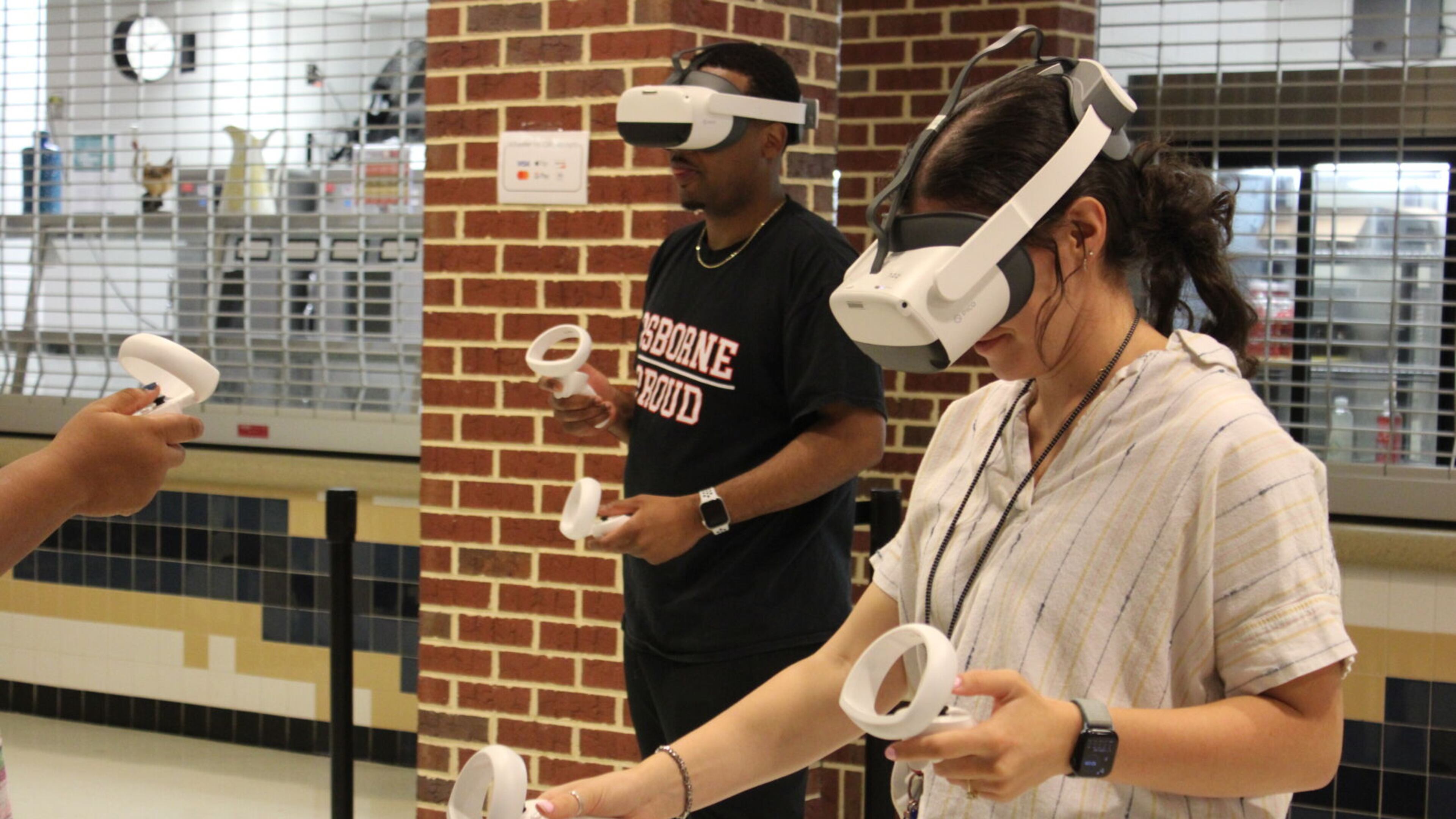HANDS ON: Cobb Teachers Learn How to Implement VR in the Classroom

EAST COBB — As Cobb students completed their first virtual learning day of the school year Monday, hundreds of the district’s math and science teachers had a virtual learning experience of their own.
Roughly 400 teachers were trained to use Prisms virtual reality headsets at Wheeler High School by the tech’s founder, Anurupa Ganguly.
Ganguly — a Massachusetts Institute of Technology graduate, former teacher and longtime education administrator — said inspiration for Prisms came when she witnessed a drop-off in women and minority students both at MIT and as an educator.
“After a decade in (education) administration, I discovered we don’t have the tools. Math and science education is broken. Kids are not leaving with any sort of real intuition, understanding of these fields or an understanding of how we apply it to build our world. That’s where Prisms was born,” she said.
Prisms uses VR to simulate real-world problems that students solve not just with their minds, Ganguly said, but their bodies, driving engagement and fostering a passion for learning.
“(Traditional math education) jumps kids to abstractions that they have no idea where it comes from. We jump them to tables, equations, variables, and kids are often left wondering ‘Where did this come from? ... (Prisms) starts with the real world problem ... (Students are) never asking the question again ‘Why am I doing this?’” Ganguly said.
In an April presentation to the Cobb Board of Education, Ganguly gave an example. When learning about reaction time, she said, students will take on the role of a train conductor.
“Instead of Y2 minus Y1 over X2 minus X1 — symbols and words and things that don’t make sense to anybody — I have kids start in a high speed train,” Ganguly said. “From the time you see a brake sign, how long does it take you to pull the brake? ... You actually go through the system you’re trying to model and you do it yourself before you then accept a mission to design the entire braking system. To do that, you have to create a mathematical model that plots thinking distance as a function of speed. But what’s so beautiful about that mathematical model is you experienced it.”
John Floresta, chief strategy and accountability officer for the district, said the use of Prisms shows Cobb’s continued focus on math and science education.
“There was a big focus on literacy, as there should be. At the same time we don’t want to lose the focus on math and science,” Floresta said. “... We really believe in the way this is going to change a classroom for math and science instruction.”
The school board approved the $2 million purchase of the tech when it passed its budget in May.
Headsets will start being used at 10 middle schools and 10 high schools in the district by Sept. 1, Floresta hopes. He estimated that at the 20 schools, between 25,000 and 30,000 students will get to experience Prisms.
Floresta said students at the Cobb Horizon High School have been using the headsets since 2021, with its teachers reporting great success.
“By making learning more of an experience, Prisms ensures that students not only grasp mathematical concepts but also enjoy the process of discovery and exploration,” said Tammy MacLean, Cobb Horizon High School math teacher, in a statement provided by the district. “As an educator, I am thankful for how Prisms answers the question so many students ask, ‘when are we ever going to use this’ by showing them the relevance of math in everyday life, adventures, and real-world applications.”
The high schools that will see Prisms this fall are: Allatoona, Campbell, Hillgrove, McEachern, North Cobb, Osborne, Pope, South Cobb and Sprayberry.
The middle schools are: Awtrey, Barber, Campbell, Daniel, Durham, Floyd, Hightower Trail, Lovinggood, Pearson, Simpson and Tapp.

